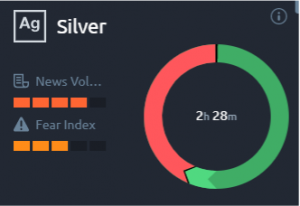How the Narrative Differed
Unlike in the case of GameStop and AMC, silver did have strong reasons to rally. Over the years, demand for the white metal has risen steadily for industrial purposes. Despite this, silver has been relatively undervalued, especially compared to gold. Given the use of silver in industries like electronics and solar panels, demand for the yellow metal is expected to grow as the global economy rebounds this year. Global demand for silver is expected to grow to 1.025 billion ounces in 2021, the highest in eight years, according to the Silver Institute, a nonprofit international association of members from the silver industry.
However, the silver squeeze did not fail because the narrative was different. It failed because the narrative was incomplete. There is good reason for bullion banks, often the biggest shorters of paper silver, to take these short positions. These banks are not looking to profit off silver’s price. Instead, they acquire physical silver for their clients and hedge these acquisitions by shorting paper silver, thus locking in future revenues. These are not naked positions, like in the case of GameStop and AMC. These are backed by physical reserves. Silver is also shorted by gold and lead miners, for whom silver is a byproduct of their primary mining activities.
In addition, most hedge funds and money managers had increased their net long positions in silver through 2020 as inflation and volatility hedges. The metal gained 47% last year.
A further significant difference from the stock of one company is silver’s considerably larger supply. It has a market cap of $1.46 trillion and has maintained a large supply surplus in most years. It requires substantially larger capital to persistently move price levels than retail investors could summon.
For these reasons, the rise in silver prices was not a clear breakout. Spot prices retreated more than 8% below the $30 per ounce high almost immediately on February 1 to $27 per ounce. The rally was over before it truly began.
The sentiment for silver is more balanced, as can be seen on the Acuity Trading Dashboard.

.png?width=336&height=224&name=Picture-1-1%20(2).png)

.png?width=254&height=300&name=Picture-3-1%20(1).png)